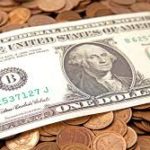The US Dollar (USD) traded sharply higher against all the major currencies on Monday after Pfizer said their COVID -19 vaccine is 90% effective in preventing the virus. While Pfizer’s vaccine still needs to be submitted for FDA review and is complicated in implementation, it confirms that biotech companies are moving in the right direction. With more than 200 coronavirus vaccines in development globally, a dozen in human clinical trials, five out of six vaccines in phase 3 trials, a viable vaccine is right around the corner. After Pfizer’s announcement, Dr. Fauci said that Moderna should have similar results. They use the same technology and are in the same phase of trials. The medical community is also getting better at treating the disease in ways that have reduced death rate. While virus cases are soaring across the globe, the world is beginning to see positive vaccine news – and more likely to follow.
-19 vaccine is 90% effective in preventing the virus. While Pfizer’s vaccine still needs to be submitted for FDA review and is complicated in implementation, it confirms that biotech companies are moving in the right direction. With more than 200 coronavirus vaccines in development globally, a dozen in human clinical trials, five out of six vaccines in phase 3 trials, a viable vaccine is right around the corner. After Pfizer’s announcement, Dr. Fauci said that Moderna should have similar results. They use the same technology and are in the same phase of trials. The medical community is also getting better at treating the disease in ways that have reduced death rate. While virus cases are soaring across the globe, the world is beginning to see positive vaccine news – and more likely to follow.
The Dow Jones Industrial Average jumped closed more than 800 points higher. Similarly 10-year Treasury yields reached the highest level since March this year. The USD rose more than 2% against the JPY and more than 1% versus the Swiss currency. Its gains against other currencies were limited by risk appetite. While President Trump has not conceded defeat, most see Joe Biden as the President-Elect and took stocks higher before Pfizer’s announcement. EUR and GBP were driven lower by the rising USD, but it was a positive day for the Canadian, New Zealand and Australian currencies.
European currencies are under pressure because investors are rightfully worried that nationwide lockdowns and record breaking COVID-19 cases will take a big toll on the region’s economy. Even if a vaccine is developed, it won’t be implemented until 2021. The fourth quarter will be a terrible one for the Eurozone and investors are bracing for that reality. Last week, EUR/USD hit one month highs on US Election uncertainty but we may have seen the top in the currency. EUR/USD should be trading closer to 1.16 than 1.20 and Tuesday’s German ZEW survey could be the nail in the coffin. Analysts expect a steep decline that reflects troubling times ahead for the Eurozone. The European Central Bank is widely expected to lower interest rates next month to avoid a double dip recession in the economy.
UK labor market numbers are also due for release and according to the PMIs, employment conditions weakened significantly in the manufacturing and service sectors. Like the Eurozone, the UK is in the midst of a strict lockdown and incoming data will remind us why the US government is reluctant to follow suit.